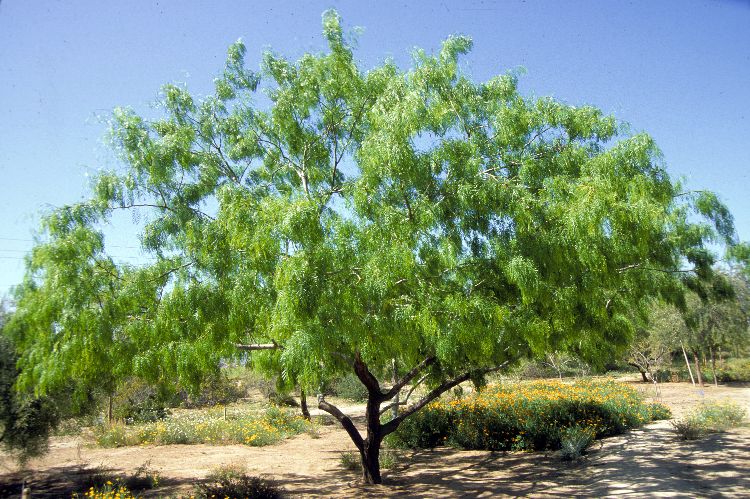
Prosopis glandulosa
Texas Honey Mesquite
This is a sprawling tree with character that takes time to develop. Its serious thorns require caution when pruning or grooming trees. 'Maverick' is a thornless selection. A similar tree is the Western Honey Mesquite. Its foliage is dark green compared to the bright green of Texas Honey. Canopy coverage: 707 square feet.
[Read More]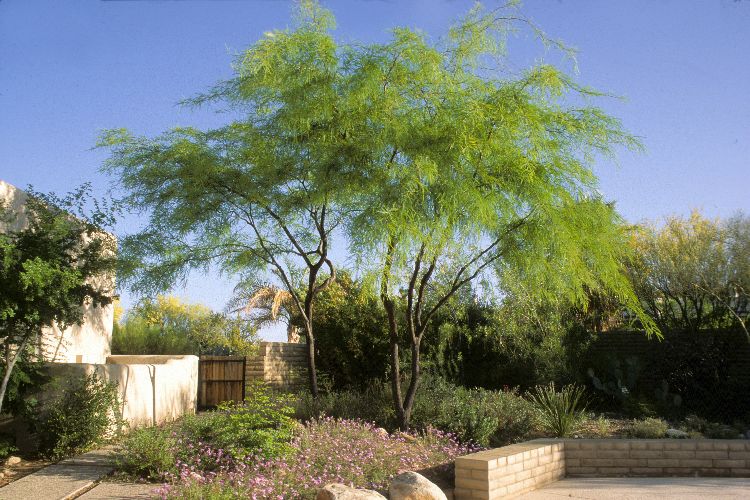
Prosopis hybrid
South American Hybrid Mesquite
Mesquites are prime, fast-growing trees for shade and screening. Important to water deeply at tree's dripline (well away from trunk) to encourage deep roots. In windy regions, blowover can be a problem. Canopy coverage:707 square feet.
[Read More]Prosopis pubescens
Screwbean Mesquite
Screwbean Mesquite can be grown as a shrub or trained into a small tree. Thorny—prune with caution. Very low water use but improved appearance with additional water. Canopy coverage: 707 square feet.
[Read More]Prosopis velutina
Velvet Mesquite
This Southwest native mesquite represents the character of the desert. 'Phoenix' is a selection that features the rootstock of the native tree grafted to a South American hybrid mesquite. Canopy coverage: 707 square feet.
[Read More]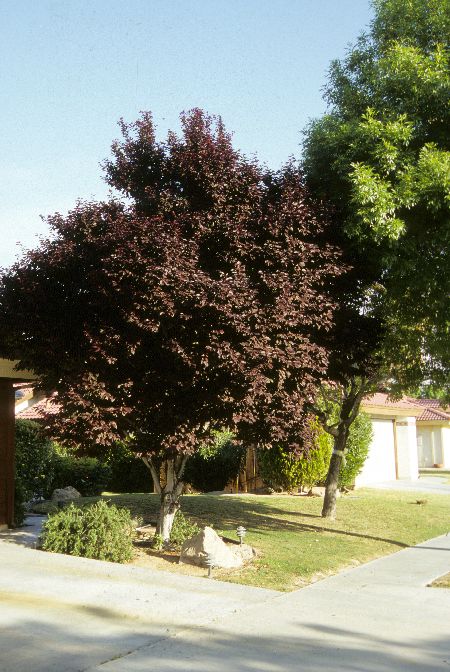
Prunus cerasifera 'Atropurpurea'
Purple Leaf Plum
Purple Leaf Plum is a small tree that remains in scale for residential use. Purple to bronze foliage contrasts nicely with green or gray-leaved plants. Canopy coverage: 177 square feet.
[Read More]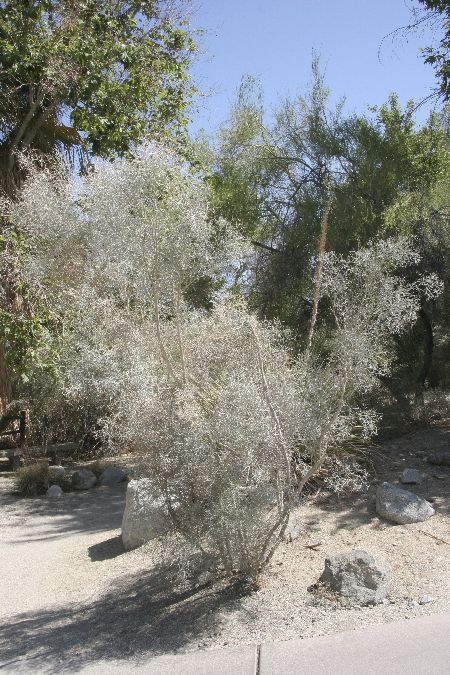
Psorothamnus spinosus
Desert Smoke Tree
The natural habitat of Desert Smoke Tree is along desert washes. Accepts low water, but occasional deep irrigations will improve plant appearance. May be hard to find plants but worth the search. Canopy coverage: 177 square feet.
[Read More]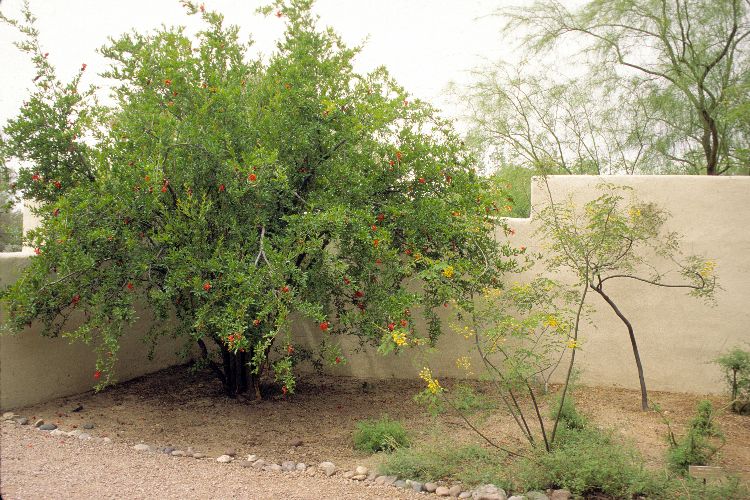
Punica granatum
Pomegranate
Pomegranate can be grown as a shrub or small tree. Edible fruit is a primary attraction. If fruit is the goal provide more water during summer. Canopy coverage: 113 square feet.
[Read More]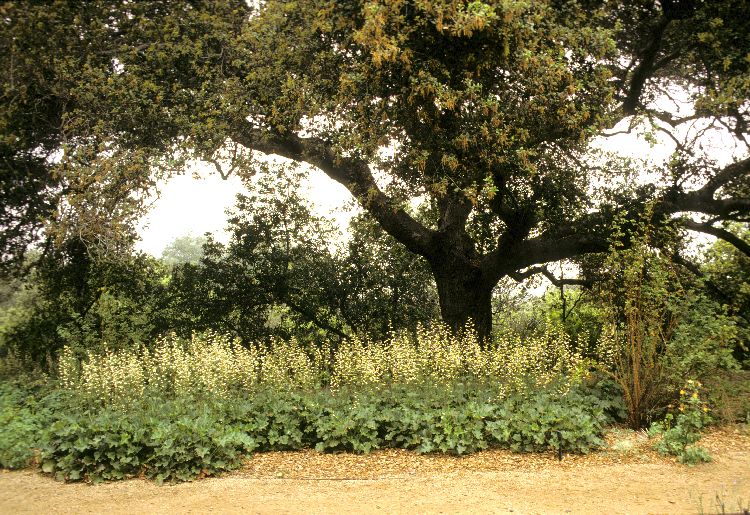
Quercus agrifolia
California Coastal Live Oak
California Coastal Live Oak is an outstanding shade tree of character where adapted. Spread is often greater than its height. Because it is native to an area with little summer rain, apply summer irrigations with caution. Leaves look much like those of holly: glossy dark green and crinkly. Canopy coverage: 1,963 square feet.
[Read More]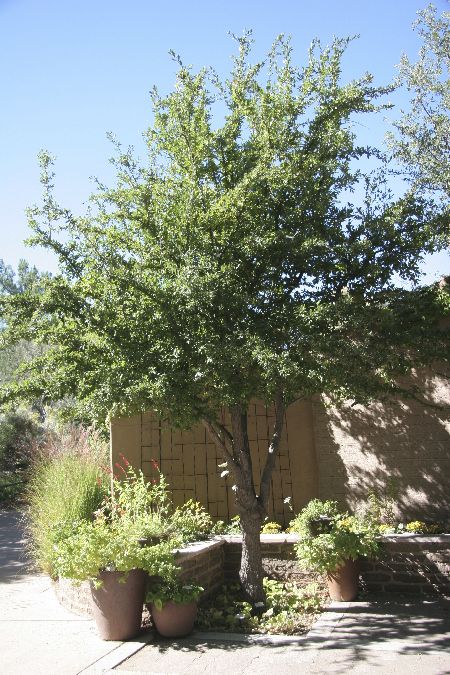
Quercus fusiformis
Escarpment Live Oak
This west Texas native is naturally drought tolerant and accepts tough conditions. Canopy coverage: 1,963 square feet.
[Read More]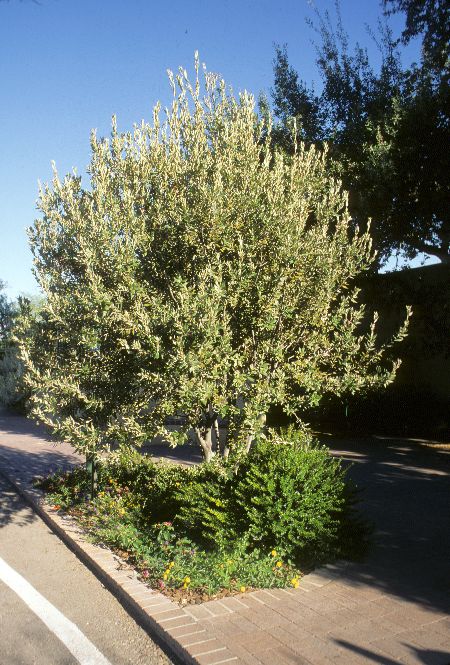
Quercus ilex
Holly Oak
Holly Oak can be grown as a tree or shrub, and actually makes a nice screen or hedge when planted close together. Canopy coverage: 1,963 square feet.
[Read More]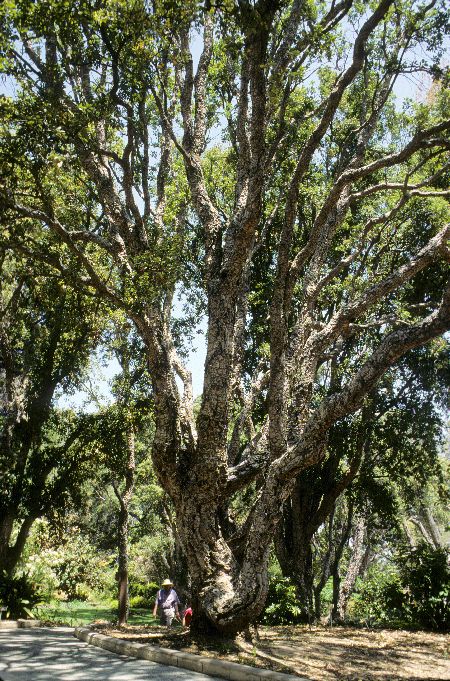
Quercus suber
Cork Oak
The deeply furrowed bark of Cork Oak, from which cork is harvested in certain parts of the world, is an attraction. Adapted to desert conditions. Canopy coverage: 1,257 square feet.
[Read More]Quercus turbinella
Desert Scrub Oak
Can be grown as a tree form, but more often serves as a shrub in tough conditions. Sharp-tipped leaves are evergreen but drop in spring as new leaves replace them. Canopy coverage: 28 square feet.
[Read More]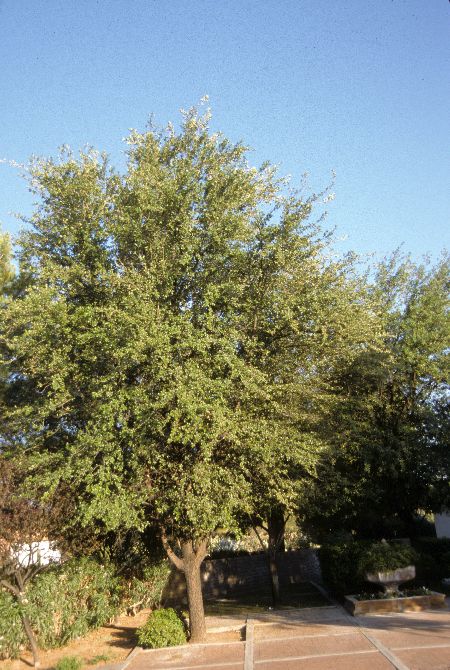
Quercus virginiana 'Heritage'
Southern Live Oak
This is a quality evergreen shade tree. Look for 'Heritage', which has shown to be well adapted to desert conditions. Canopy coverage: 2,827 square feet.
[Read More]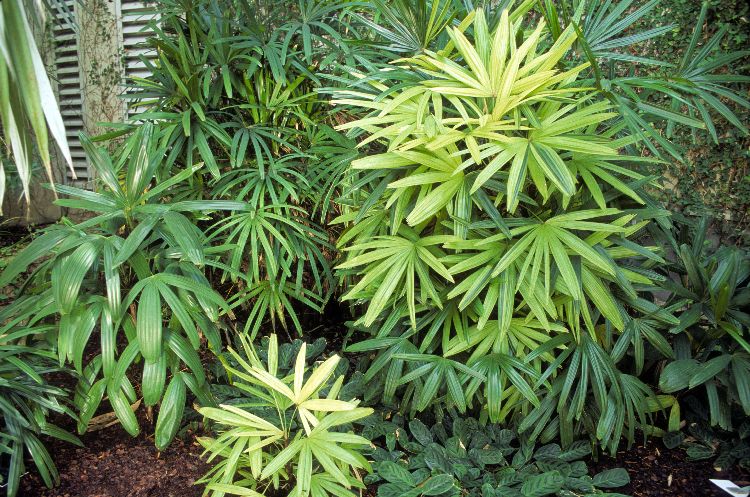
Rhapis excelsa
Slender Lady Palm
Slender Lady Palm is a decorative palm that forms dense clumps of numerous individual stems, reaching several feet high. Responds well to regular applications of diluted fertilizer. Canopy coverage: 79 square feet.
[Read More]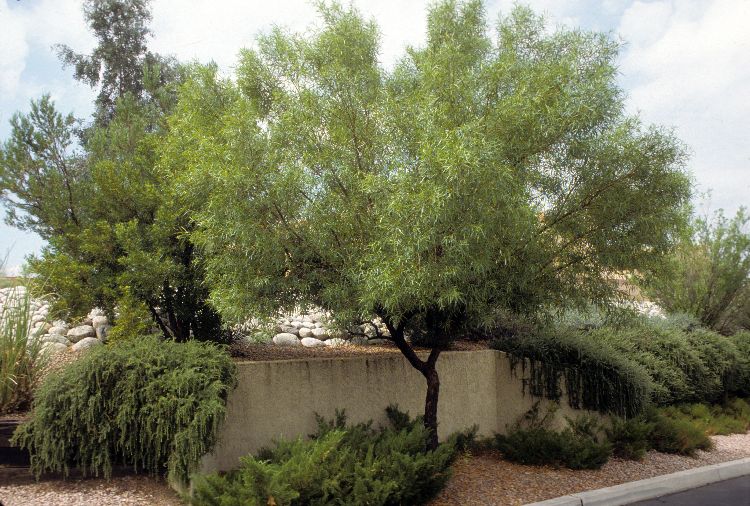
Rhus lancea
African Sumac
This is an attractive evergreen tree but female plants can be messy with prolific production of berries. Some people are allergic to its pollen. Canopy coverage: 1,257 square feet.
[Read More]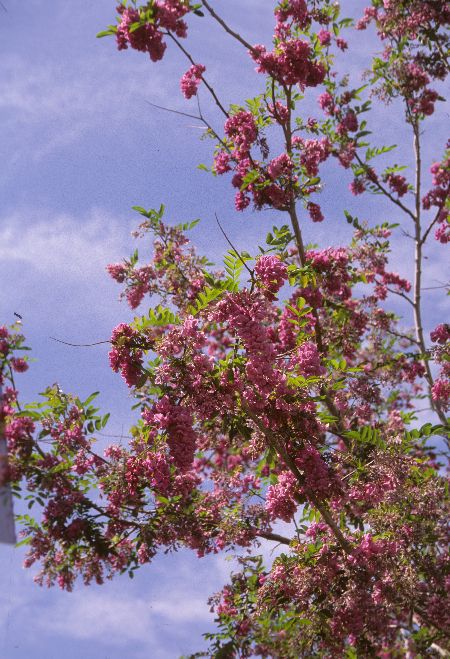
Robinia pseudoacacia
Black Locust
Black Locust has an open, branching form. Requires pruning-training when young to develop into an appealing flowering tree. Canopy coverage: 2,827 square feet.
[Read More]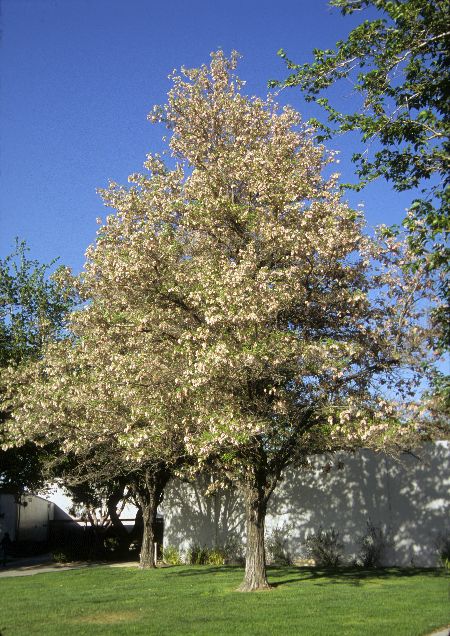
Robinia x ambigua
Common Locust
Common Locust is a colorful tree when in flower. Many selections are available, look for 'Purple Robe'. Seed pods produce a fair amount of litter. Canopy coverage: 707 square feet.
[Read More]Sambucus mexicana
Mexican Elderberry
Leaf drop usually occurs in late summer and can be more complete with drought. Not refined in appearance, so avoid using close up to outdoor areas. Berries attract birds and can also be made into jelly or wine. Canopy coverage: 314 square feet.
[Read More]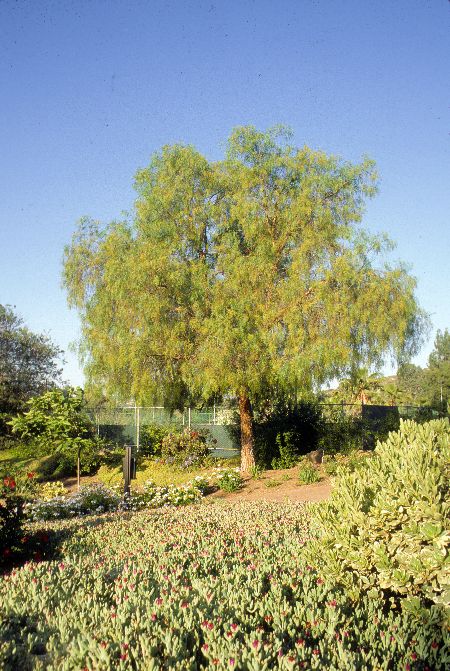
Schinus molle
California Pepper Tree
Picturesque tree but one with problems. Graceful weeping habit is appealing, but branches are susceptible to breaking in high winds, especially if trees are overwatered. Female trees produce interesting clusters of reddish pink berries in fall and winter. Considered extremely invasive. Canopy coverage: 530 square feet.
[Read More]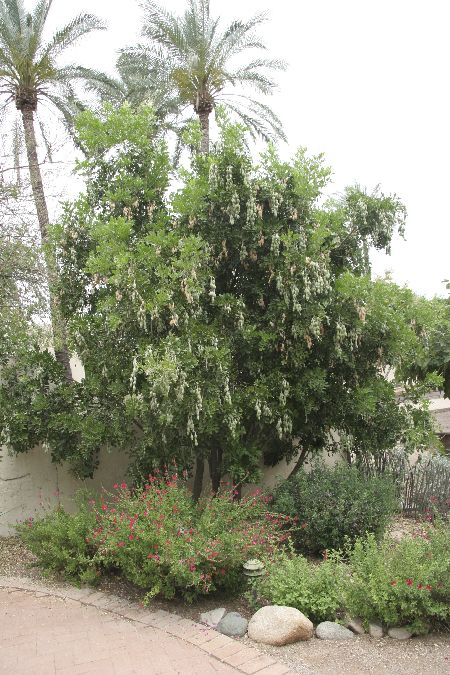
Sophora secundiflora
Texas Mountain Laurel
This is a quality small tree or shrub with many desirable features. Fragrant, wisteria-like flowers are followed by interesting silvery bean pods. Canopy coverage: 177 square feet.
[Read More]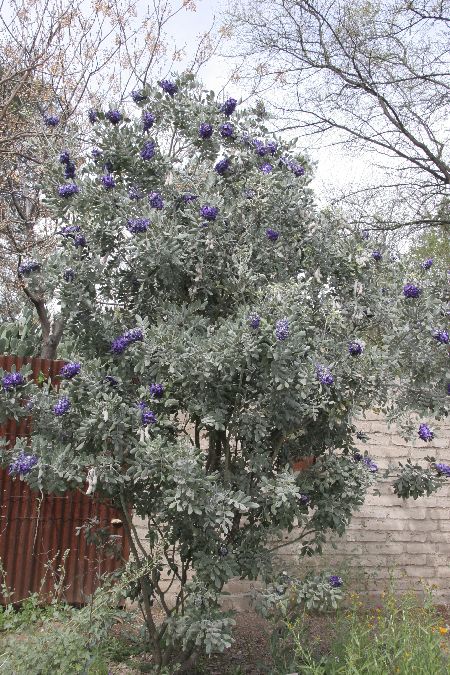
Sophora secundiflora 'Silver Peso'
Silver Peso Mountain Laurel
Very similar tree as the species, Sophora secundiflora, but leaves are a distinctive silvery color. Grow as a small tree or shrub. Fragrant, wisteria-like flowers are followed by interesting silvery bean pods. Canopy coverage: 177 square feet.
[Read More]